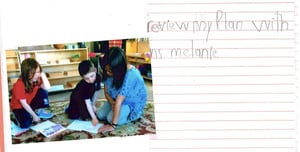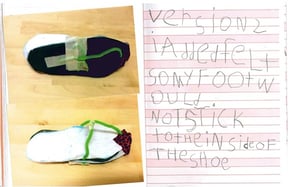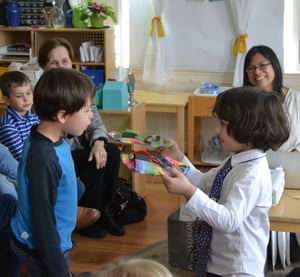What happens when you direct the energy and imagination of a kindergartener into the engineering design process? That’s the question my colleagues and I set out to answer last year at Kingsley Montessori School in Boston when we decided to develop a Kindergarten Engineering Design Workshop. One source of inspiration was the Engineering is Elementary curriculum.
An Alternative to Traditional Science Fairs
We had run traditional science fairs, the kind where students pick an experiment from a book, follow the steps, then present their results in poster format. But we wanted our students to experience authentic exploration, not follow a cookbook recipe to a predictable outcome.
I was already familiar with Engineering is Elementary—I’d used it in programs for first- through third-graders in previous years. We liked EiE’s child-friendly approach and the way students build their prototypes from ordinary household materials such as pipe cleaners and coffee filters. We also liked how EiE frames failure as an ordinary outcome and an opportunity for learning.
Real-World Goals and Criteria
We started by setting goals: Every kindergartener at the school (40 students spread across seven mixed-age classrooms) would become an engineer for three weeks. Using EiE’s Engineering Design Process (Ask, Imagine, Plan, Create, and Improve) as a road map, each student would carry out a personally meaningful, hands-on project; keep a journal to record their work; and make a presentation at a “Design Showcase” for peers, parents, and faculty.
 |
WATCH IT! This short video introduces you to the EiE EDP.
We chose “designing shoes” as the engineering design challenge. Footwear appeals to both boys and girls, and shoes offer many avenues for creativity in form and function.
We started by asking students to examine their own shoes. They agreed that no matter how “cool” a shoe is, it’s not worth wearing if it doesn’t stay on your foot! From this they developed two measurable design criteria:
- The shoe must stay on when you walk across the room.
- The shoe must stay on when you jump 10 times.
Caution: Young Engineers at Work!
 |
With these criteria established, each young engineer received a “parts kit”—a large plastic bag filled with cardboard, bubble wrap, and other household scraps. Over the next few days, students imagined shoe designs and sketched their plans. “No cutting or gluing without a plan!” was our mantra.
After we reviewed their plans, the kindergarteners were ready to engineer! In every corner, you could see children measuring, tracing, cutting, and assembling. No two shoe designs were alike; from sandals to boots, the variety was stunning.
Embracing the “Improve” Step
 |
When it was time to test their designs, students giggled as they performed the jump test and cheered each other on during the walk test. Then they made beelines back to their tables to tweak (or overhaul) their designs. One boy asked to skip recess so he could continue working on his prototype.
When their designs met the criteria, students moved on to upgrading their shoes for functionality, comfort, and appearance. They also documented their work in journals that captured the learning, the joy, and the sense of ownership this challenge inspired.
Highly Engaged Learning
 |
| Photo credit: Craig Byer |
At the Design Showcase, each student gave a formal presentation to parents and peers. For many, it was their first time speaking in public! They did it with pride, grinning ear-to-ear.
It was inspiring to see what’s possible when students are deeply engaged in their learning. Forty young children succeeded in transforming scraps into shoes . . . and in the process, discovered the budding engineers inside themselves.
Guest blogger Melanie Flores is an independent education consultant and a former preschool assistant teacher and engineering enrichment teacher at Kingsley Montessori School in Boston, MA. This blog post is adapted from a news article first published on the Kingsley Montessori website on July 26, 2016.
Engineering is Elementary is a project of the National Center for Technological Literacy® at the Museum of Science, Boston.








